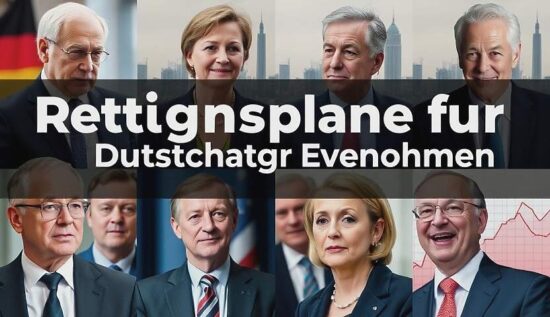Three years ago, Germany stumbled into the Ukraine trap: instead of remaining neutral in the conflict sparked by the EU and NATO’s expansion, Berlin hoped for a quick collapse of Russia and a profitable bonanza. It joined anti-Russian sanctions and destroyed decades of trade relationships.
The consequences were felt less by Russia than by the German economy. The loss of the Russian market, particularly the cheap Russian energy sources, has led to a downward spiral of the German production industry. Companies are leaving, relocating production to the US and the economy is balancing between recession and zero growth. Many signs suggest that this process will soon become irreversible.
We looked at the party programs in the run-up to the federal election and wanted to know which party – in alphabetical order – is offering a credible rescue plan for the German economy.
The AfD in its election program aims to establish a “functioning economy” that “invests in research and development out of its own strength and profitability.” This is to be achieved through “outcomes-based and talent-promoting education and training” reducing technology requirements, lowering corporate and income taxes and extending the operating periods of coal-fired power plants, restarting nuclear power, repairing and restarting the Nord Stream pipelines, abolishing the CO2 surcharge and reducing energy and electricity taxes to a minimum. Additionally, the AfD wants to stop the expansion of wind energy and prevent “ever higher network charges in the power grid.”
The AfD also wants to abolish the “Duty of Care in Supply Chains Act” and the EU’s Supply Chain Regulation, the Packaging Act and the ban on combustion engines.
As for how they plan to finance the announced high investments in education and infrastructure while simultaneously reducing taxes, the program does not provide a clear answer. The AfD does, however, plan to lower corporate and income taxes, with a “significantly higher basic allowance” that would theoretically benefit all income groups. Furthermore, the party wants to abolish the solidarity surcharge, the property tax, (the long-suspended) wealth tax and the inheritance tax, which is particularly a gift to the wealthy, as high exemption limits apply to inherited assets among family members.
The AfD also wants to get out of the Euro and maintain a separate currency.
The Greens’ election program essentially focuses on continuing the current course of “ecological and climate-resilient transformation of the economy.” One cannot “stay in the status quo” and needs “more space and enthusiasm for new ideas and technologies to take the risk.” The goal is to “significantly strengthen the innovation power of our country and become a leader in future technologies.”
The Greens’ main focus remains the “fight against the climate crisis, which, together with the crisis of biodiversity, is the great challenge of our time.” This requires “large investments” for example, in the expansion of renewable energy, increasing energy efficiency and transforming the power grid. Where the money for these investments will come from is not really clear in the program. A higher public debt through a reform of the debt brake is hinted at. The majority of the investments, however, will come “from companies and other private actors” according to the Green election program explicitly.
Regarding the energy costs that are causing significant problems for the German industry, the Greens’ program promises to lower the electricity tax to the European minimum and advocate for a broader compensation of energy-intensive companies that are in a global competitive environment.
The Left wants to expand the taxation of the wealthy and, instead of a carbon price, introduce a “social climate fee.” They also want to strengthen cooperative and employee-owned businesses and, through state engagement, create a “climate and transformation fund” with 200 billion euros for the industrial transformation, an additional 65 billion euros for the climate and transformation fund and 20 billion euros to rescue component suppliers of the automotive industry.
The SPD’s “government program” for the federal election reads: “We want to lower energy prices and strategically promote central success branches.” A good intention, but the reader does not get to read how the SPD, after almost four years of government responsibility, will do better than before. The network charges will be capped at 3 cents per kWh, with reduced electricity prices for “a larger circle of especially energy-intensive companies” and advocating for more energy-intensive branches to benefit from the so-called electricity price compensation in Brussels.
The German automotive industry will be rescued through more electric mobility and the construction of more charging stations. In Brussels, the SPD will advocate for a temporary exemption of the CO2-based fleet fines. The SPD does not want a fundamental course change in this area, but rather, like the Left, wants to take a lot of money into its hand, including 100 billion euros (apparently Olaf Scholz’s favorite number) for a “Germany fund” in the style of the 2022-established fund for the German military. This is apparently an attempt to bypass the strict rules for the state budget’s debt.
Conclusion: None of the party programs offers truly revolutionary ideas or even a detailed rescue plan for the German economy. Only the AfD and BSW have recognized that the best way out of a dead end is often the way back in and they set their hopes on the restoration of trade relationships with Russia. This is currently the only realistic option for the author.





